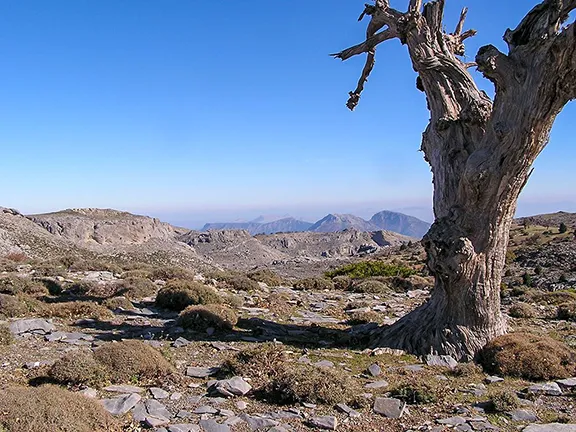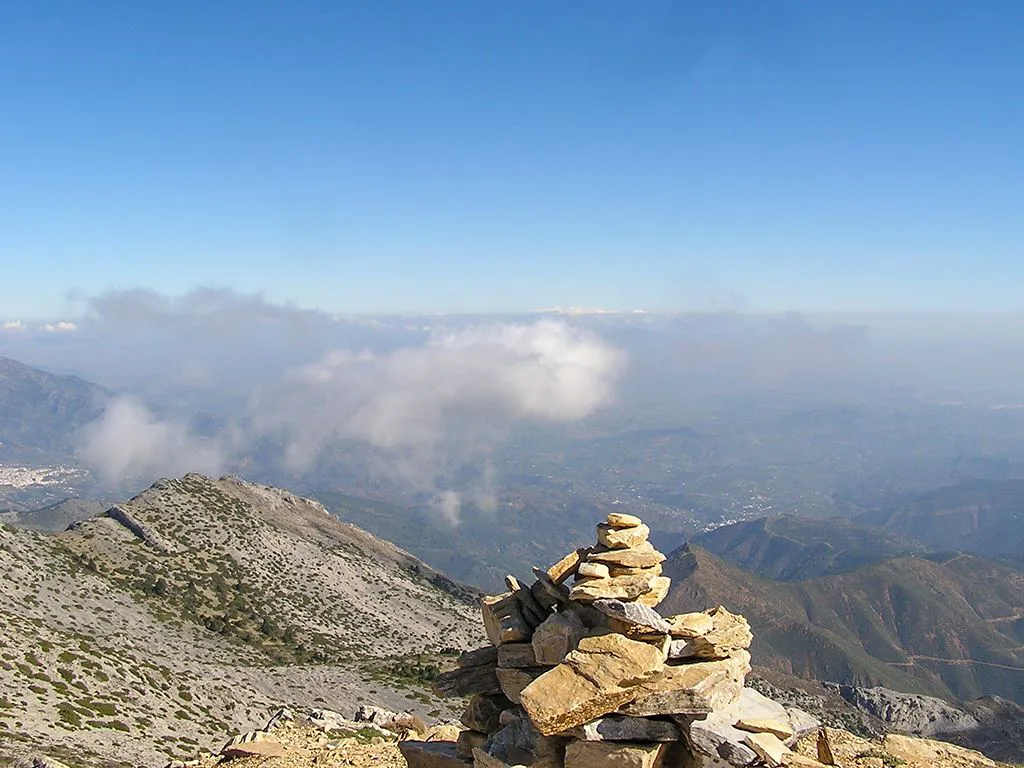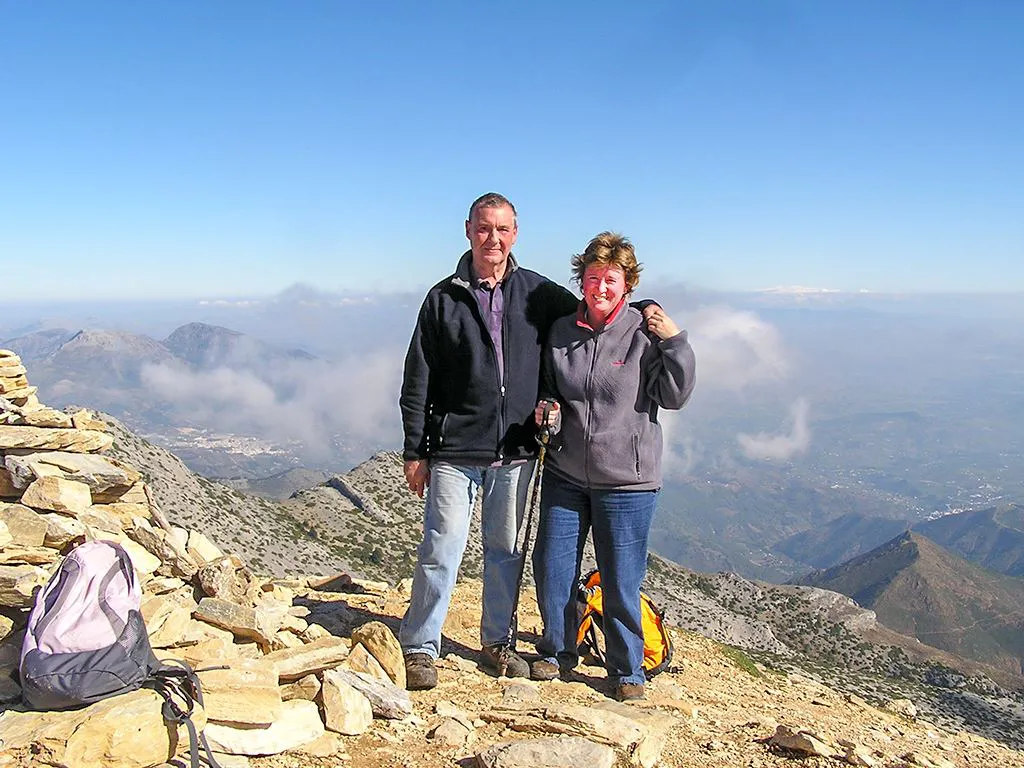The Sierra de las Nieves Parque National is a limestone karstic wilderness of peaks, cliffs, sink-holes, poljes, siphons, travertines, caves and chasms
By Nick Nutter | Updated 29 Aug 2022 | Málaga | Parks |
Login to add to YOUR Favourites or Read Later


Stunted oak on Torrecilla
In June 2021, the Sierra de las Nieves was upgraded from a Natural Park to become one of three National Parks in Andalucia.
The Sierra de las Nieves Parque National is a limestone karstic wilderness of peaks, cliffs, sink-holes, poljes, siphons, travertines, caves and chasms. Beneath the surface is the most complex labyrinth of caves and caverns in Andalucia; Sima Honda, Cueva de la Tinaja, Sima del Aire and Sima Prestá. In total contrast, the volcanic peridote rocks of the Tolox area, rich in iron, magnesium and heavy metals, shine green, brown and red where the metals have oxidised on the surface.


El Chorro Gorge
Virtually untouched by human hand, the area hosts over 1,500 types of plants, 19 of them exclusive to the Ronda region, including a Spanish fir, Pinsapo de Las Escaleretas, that is a relic from hundreds of thousands of years ago and growing nowhere else. Nearby is a chestnut tree called Castaño Santo that is over 1000 years old. Truly this is an ancient landscape.


Noctule Bat
Fauna includes roe deer, wild boar, mouflon sheep, fallow deer, otter, marten, gineta and mongoose. The prize however has to go to the birds of prey, golden eagle and Bonelli’s eagle are natural residents and can often be seen soaring over the road between El Burgo and Ronda. The road is high above the valley and the eagles can, amazingly, be seen flying at the same level as you. Several groups of bats exist in the Sierra de las Nieves, including the greater noctule, the largest European bat that lives in the cavities of trees.


Sierra de las Nieves Parque National
The greater noctule bat (Nyctalus lasiopterus) is a rare carnivorous bat found in Europe, West Asia, and North Africa. It is the largest and least studied bat in Europe with a wingspan of up to 46 centimetres and is one of the few bat species to feed on passerine birds. Greater noctule bats are the only bat species to hunt birds on the wing rather than when roosting. The greater noctule bat has wings adapted for open-air hunting and uses echolocation frequencies above the hearing range of birds.


Torrecilla summit
This remote area was studied in the 19th century by Swiss botanist Edmond Boissier and in 1933 by Spanish botanist Luis Ceballos. In 1970 the park was declared a National Hunting Reserve, and in 1995 a UNESCO Biosphere Reserve.


Torrecilla summit
One of the finest ways to experience the Sierra de las Nieves Parque National is to stay at one of the villages surrounding the park, Istan, Monda, Tolox, Yunquera, El Burgo and Igualeja, or the nearby town of Ronda. The walk to the top of the highest mountain in the range, Torrecilla, is an adventure not to be missed.